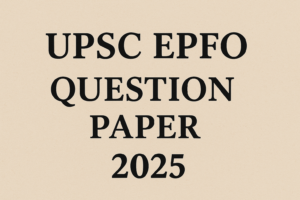Q. 18 How do you account for the growing fast food industries given that there are increased health concerns in modern society? Illustrate your answer with the Indian experience. (15 Marks, 250 Words)
| Approach |
|
The growth of fast food reflects a deeper paradox of globalization: while modern societies are increasingly health-conscious, they also consume more processed and fast food. This tension is not only economic but also sociological, affecting lifestyle, family structures, and health behaviors.
Reasons for Growth of Fast Food Industry
- Urbanization & Time Constraints: Busy work-life balance and nuclear families reduce time for home cooking.
- Eg: NielsenIQ Shopper Trends Report (2024), 42% of urban shoppers in India use quick commerce platforms for purchasing ready-to-eat meals.
- Affordability & Accessibility: ₹99 menus, combos, and discounts attract lower- and middle-income groups.
- Globalization & Aspirations: Western food brands seen as modern lifestyle markers.
- Eg: McDonald’s “McAloo Tikki” or Domino’s localized menus.
- Aggressive Marketing: Celebrity endorsements, youth-focused campaigns, and children-targeted ads.
- Technology & Delivery Platforms: Apps like Swiggy/Zomato fuel instant access.
- Eg: RedSeer Report (2023): Swiggy and Zomato process 1.6 million orders/day, mostly fast food.
Why Fast Food Grows Despite Health Concerns
- Taste & Instant Gratification: Preference for flavor and convenience outweighs awareness of obesity/diabetes risks.
- Eg: 24% of Indian women and 23% of Indian men are overweight or obese (combined).
- Cultural & Social Factors: Eating out is part of urban youth culture (mall food courts, cafes).
- Eg: Fast food = “social experience,” not just food.
- Industry’s “Healthy” Alternatives: Subway promotes “fresh,” McDonald’s added salads/juices.
- Eg: PepsiCo India reduced sodium in snacks by 30% (2021) to appeal to health-conscious customers.
- Nutrition Transition in Developing Societies: Shift from traditional diets (millets, pulses) to processed foods as a symbol of modern living.
- Eg: FAO (2022): Ultra-processed food consumption rising fastest in India among emerging economies.
Indian Experience
- Market Expansion: India is among the top 5 fastest-growing fast food markets.
- Eg: Revenue of Indian QSR market crossed US$29 billion, growing at 18% annually (Statista, 2024).
- Menu Localization: Brands adapt to Indian tastes: Paneer Zinger (KFC), Masala Pizza (Domino’s).
- Gender-wise experience: Working women in urban households rely more on processed food due to double burden – work + domestic chores.
- Public Health Challenge: Simultaneous rise in non-communicable diseases (NCDs). India is now among the top countries in diabetes and childhood obesity rates.
- Eg: India is the diabetes capital of the world (WHO, 2023).
- Eg: Childhood obesity in India increased 3-fold since 2000, linked to junk food consumption. (Lancet, 2023)
- Policy Response: FSSAI’s “Eat Right India” campaign, front-of-pack labeling proposals and restrictions on junk food in school canteens show efforts to balance industry growth with health concerns.
- Contradiction in COVID Era: While immunity foods saw demand, Domino’s reported record sales in 2021, reflecting consumer preference for convenience over health.
The growth of fast food industries despite rising health awareness reflects a deeper tension between convenience, culture, and commerce versus long-term health priorities. In India, this contradiction is especially sharp given rising middle-class aspirations alongside growing NCDs.
The way forward requires stricter regulation (FSSAI), nutrition education, promotion of traditional diets, and healthier innovation by food companies to balance consumer demand with public health.

 UPSC EPFO Answer Key 2025 Out (Unofficia...
UPSC EPFO Answer Key 2025 Out (Unofficia...
 UPSC EPFO Question Paper 2025 PDF Downlo...
UPSC EPFO Question Paper 2025 PDF Downlo...
 UPSC EPFO Admit Card 2025 Out @ upsc.gov...
UPSC EPFO Admit Card 2025 Out @ upsc.gov...

























